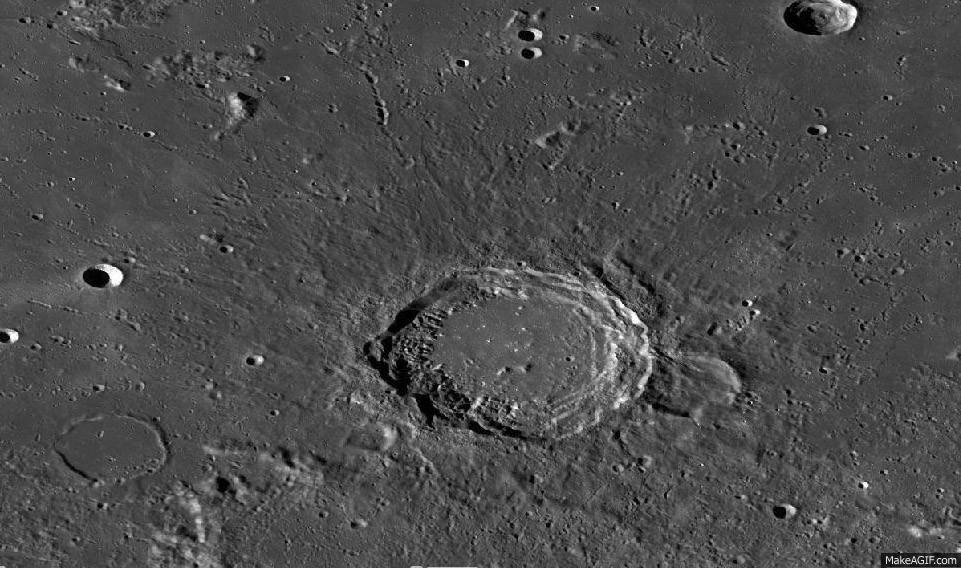July 11, 2013
Bright Ejecta Flow
animated gif of bright radar image and LRO QuickMap image
When looking at a radar view of Aristoteles I was struck by the long extension of brightness to the north. In a radar image, brightness generally is due to roughness of the surface. The radar mosaic was made by sending 70 cm wavelength pulses of energy from Arecibo Observatory in Puerto Rico, which hit the Moon and were reflected back to Earth to be received at the Green Bank Telescope in West Virginia. The 70 cm signal penetrates about 10 m of depth of the hyper-dry lunar regolith, so Aristoteles is surrounded by a 10 m thickness of blocks of rocky ejecta. To compare the radar view with a normal visual image I made this animated gif with LRO data from QuickMap alternating with the bright radar view. It is surprising how little of the radar bright area is distinguishable on the visible wavelength image. Without the radar we would not notice so easily the uneven distribution of ejecta, and hence wouldn't have to wonder why that happened. In fact, Aristoteles does not have rays or a surrounding halo of brightness on full Moon views, so we wouldn't expect that it is as young as radar suggests.
Chuck Wood
Related Links
21st Century Atlas chart 10.
Yesterday's LPOD: Resurrecting a Historic Observation
Tomorrow's LPOD: Golden Fractures
COMMENTS?
Register, Log in, and join in the comments.




